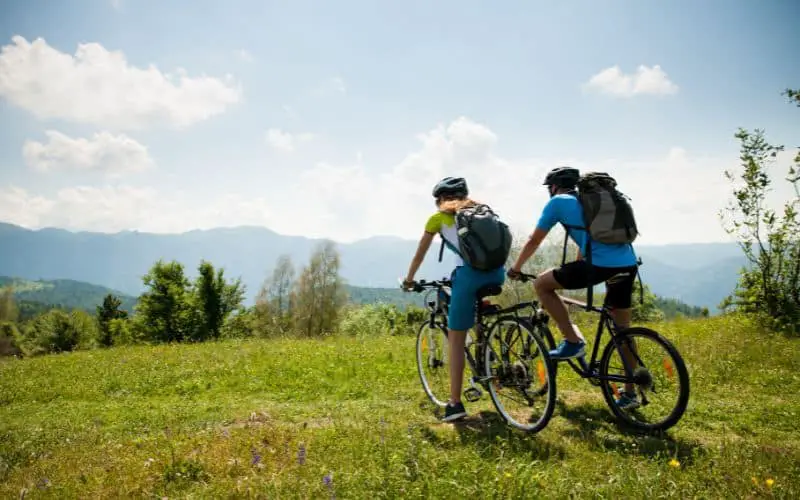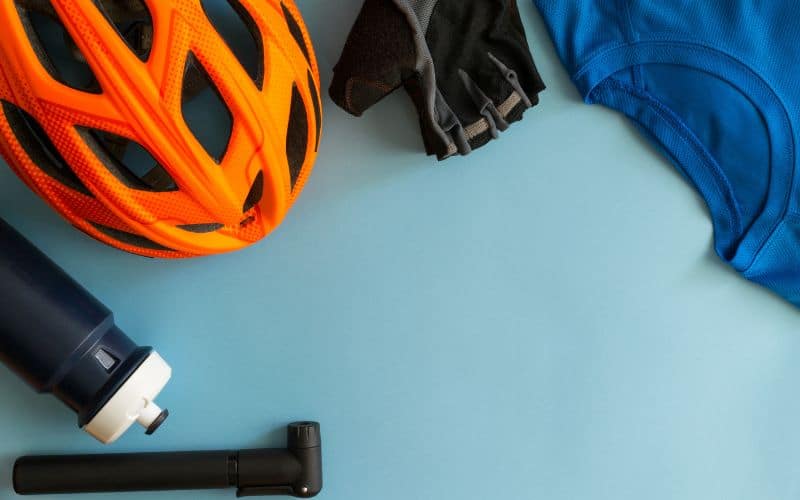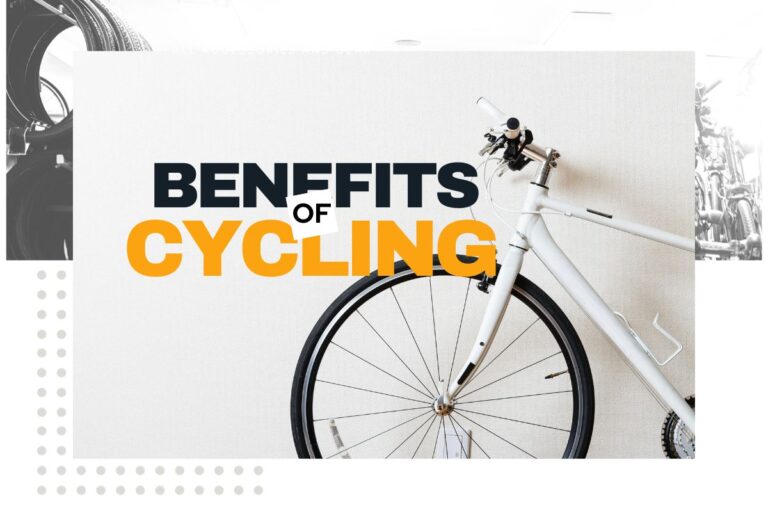Cycling is not just exercise; it’s a lifesaver.
In the world of fitness, cycling stands out. It’s more than a means to lose weight. Cycling strengthens the heart and wards off diseases. It’s an enjoyable way to achieve lasting health benefits, often overlooked in typical fitness routines.
Embrace cycling for a healthier you.
Health Benefits of Cycling
Let’s kick things off with the health benefits of cycling.
Impact on Cardiovascular Health
Cycling is a fantastic way to improve your cardiovascular health.
Did you know that people who cycle to work experience notable health improvements? As you pedal away, your heart rate increases and blood pumps more efficiently through your body, reducing the risk of heart disease.
Cycling can also help lower cholesterol and blood pressure – two factors that contribute to heart attacks. So, keep on pedaling and think of the good you’re doing for your heart!

Reduction in Diabetes and Stroke Risk
Are you aware that cycling can help reduce your risk of developing type 2 diabetes and stroke? It’s true!
Maintaining an active lifestyle, including regular cycling, helps control blood sugar levels and improves insulin sensitivity, lowering the risk of type 2 diabetes.
As for strokes – the increased blood flow from cycling brings added benefits like reducing inflammation and lowering blood pressure, which are vital factors in stroke prevention.
Here are some quick stats to illustrate the benefits:
- Lower diabetes risk: Consistent cycling for 30 minutes per day can lead to a 40% lower risk of developing diabetes.
- Reduced stroke risk: Regular cycling can decrease your chance of having a stroke by up to 27%.
General Health Improvement
Cycling offers more than just cardio benefits – it also helps you achieve overall health improvement.
First, cycling is a low-impact exercise, perfect for beginners. It also strengthens your muscles, especially your legs, helping you walk, balance, and climb stairs more efficiently.
But wait, there’s more!
Cycling is an enjoyable aerobic activity that burns calories, which can contribute to weight loss. Research has also indicated that consistent cycling may lower the risk of certain cancers.
So, next time you hop on your bike, remember that you’re doing more than just having fun – you’re taking care of your body in multiple ways!
Check out why doctors are prescribing cycling!
Cycling and Mental Health
Did you know that cycling can do wonders for your mental health? In this section, we’ll explore how bike riding can help reduce stress and anxiety and enhance your well-being and mood.
Reducing Stress and Anxiety
Riding a bike increases your heart rate, pumping more oxygen to your brain. This increased oxygen flow has been proven to help manage anxiety and depression.
So, the next time you feel overwhelmed, consider riding a bike to boost your mental health.
Enhancing Well-Being and Mood
Cycling not only helps with stress and anxiety but is also known for enhancing overall well-being and mood. When you cycle, your brain releases endorphins, serotonin, and dopamine – all chemicals that make you feel happy!
Moreover, cycling is social, allowing you to connect with supportive communities, share your experiences, and make new friends. You didn’t go on a ride until you uploaded it to Strava!
So, besides improving your physical health, cycling provides a much-needed sense of belonging.

Physical Fitness Gains from Cycling
In this section, we’ll discuss some key physical fitness gains you can achieve through cycling. We’ll focus on muscle and joint strength, core and leg fitness, and how it can provide a full-body workout.
Muscle and Joint Strength
Cycling is a great way to strengthen your muscles and joints in various ways. When you’re pedaling, you engage different muscle groups, including:
- Quadriceps: The muscles at the front of your thighs
- Hamstrings: The muscles at the back of your thighs. Hint – cycling can help with tight hamstrings!
- Glutes: The muscles of your buttocks
- Calves: The lower leg muscles
- Core: The muscles around your torso and abdomen that help stabilize your body
Cycling at a moderate intensity can also help improve joint flexibility, particularly in the hips, knees, and ankles. We’ve also compared the effects of running and cycling on knees.
By working these muscles and joints, cycling can help you improve your strength and prevent injuries.
Core and Leg Fitness
Your legs and core are the primary focus when you cycle.
Your legs generate the power to propel you forward while your core helps stabilize and support your body throughout the ride. You build fitness and stamina in these areas by actively engaging your leg muscles (quadriceps, hamstrings, and calves) and core muscles.
Consistent cycling can increase leg and core strength, making everyday activities easier and improving overall physical fitness.
Full Body Workout
Although cycling primarily targets your legs and core, it can also provide a full-body workout by incorporating various muscle groups.
For example, when climbing a hill or riding against resistance, your upper body muscles (like your arms, shoulders, and chest) are recruited to help maintain balance and generate power. Engaging these additional muscles can provide a more complete workout experience and improve overall fitness.

Safety and Precautions in Cycling
Cycling is a fun and healthy activity that offers numerous benefits. While enjoying your ride, it’s essential to prioritize safety. This section will explore the proper equipment and clothing for a safe and comfortable cycling experience.
Proper Equipment
Wearing a helmet is the most important safety precaution when cycling. A well-fitting helmet protects your head in case of a fall or collision, significantly reducing the risk of serious injury. Check out this post if you need help choosing a bike helmet.
In addition to a helmet, consider these pieces of equipment if you’re starting:
- Pressure-relieving saddle: A comfortable saddle helps prevent soreness and numbness during long rides. Look for a saddle to relieve pressure on your sit bones and sensitive areas.
- Front and rear lights: Ensure your bike has lights to increase visibility in low-light conditions and at night. Lights help you and others on the road see each other, avoiding potential accidents.
- Mirrors: Install mirrors on your bike to monitor the traffic behind you. This will allow you to make informed decisions and maneuvers on the road.
For a bit of fun, consider adding a bike bell or wheel lights if you REALLY want to be noticed on the roads!
Dressing Right for the Ride
Proper cycling attire enhances comfort during your ride and contributes to your overall safety. When choosing your cycling clothes, consider these factors:
- Visibility: Bright colors and reflective materials help drivers and cyclists notice you, particularly in low-light situations. Choose clothing with reflective elements to increase your visibility.
- Comfort: Select moisture-wicking, breathable fabrics that keep you dry and comfortable. Avoid loose, baggy clothing that can get caught in your bike’s components and cause accidents.
- Protection: Wear layers to keep warm and insulate your body in cooler weather. On hot days, choose lightweight, breathable materials to keep you cool, and don’t forget to apply sunscreen to your exposed skin.

Cycling and the Environment
Did you know that cycling is one of the most environmentally friendly modes of transportation? It’s not only a healthy way to get around but also a great way to contribute to preserving our planet.
In this section, we’ll explore how cycling helps the environment and discuss its benefits in eco-friendly transportation and combating air pollution.
Eco-Friendly Transportation
When commuting, choosing a bike over a car can significantly reduce your carbon emissions.
Opting for a bike just once a day can cut the average person’s carbon emissions from transportation by 67%! Imagine the positive environmental impact if more people ditched their cars for bicycles.
Cycling is a zero-emission method of transportation that helps combat climate change and contributes to a greener lifestyle.
Moreover, bikes don’t require fossil fuels, so using them reduces greenhouse gas emissions and the demand for non-renewable resources.
Plus, bikes take up little space, so they contribute less to urban congestion and require less infrastructure.
Overall, cycling is a sustainable and efficient means of transportation that benefits nature and our communities.
Combating Air Pollution with Cycling
Air pollution is a major issue, especially in urban areas where vehicle emissions contribute significantly to poor air quality.
Cycling can significantly improve air quality by reducing reliance on gas-guzzling vehicles. Studies have shown that cycling saves the European Union over 16 million tons of CO2 equivalents per year, comparable to Croatia’s total yearly CO2 emissions!
So, consider replacing regular driving with cycling. It benefits the environment, and you’ll also improve your health, save money on fuel, and do your part in creating a cleaner, greener environment for future generations.
Happy pedaling and ride on!

